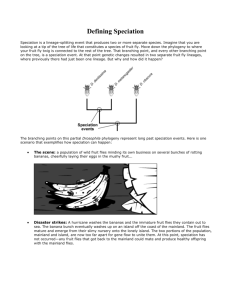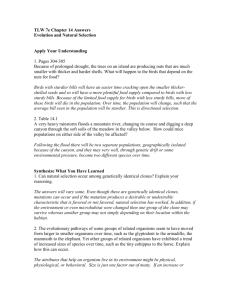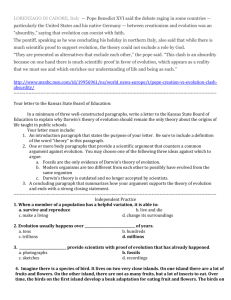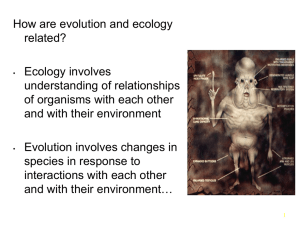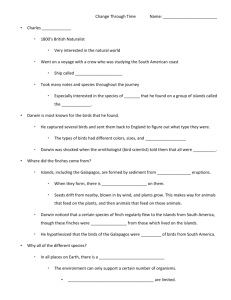Natural Selection and Theories of Evolution
advertisement
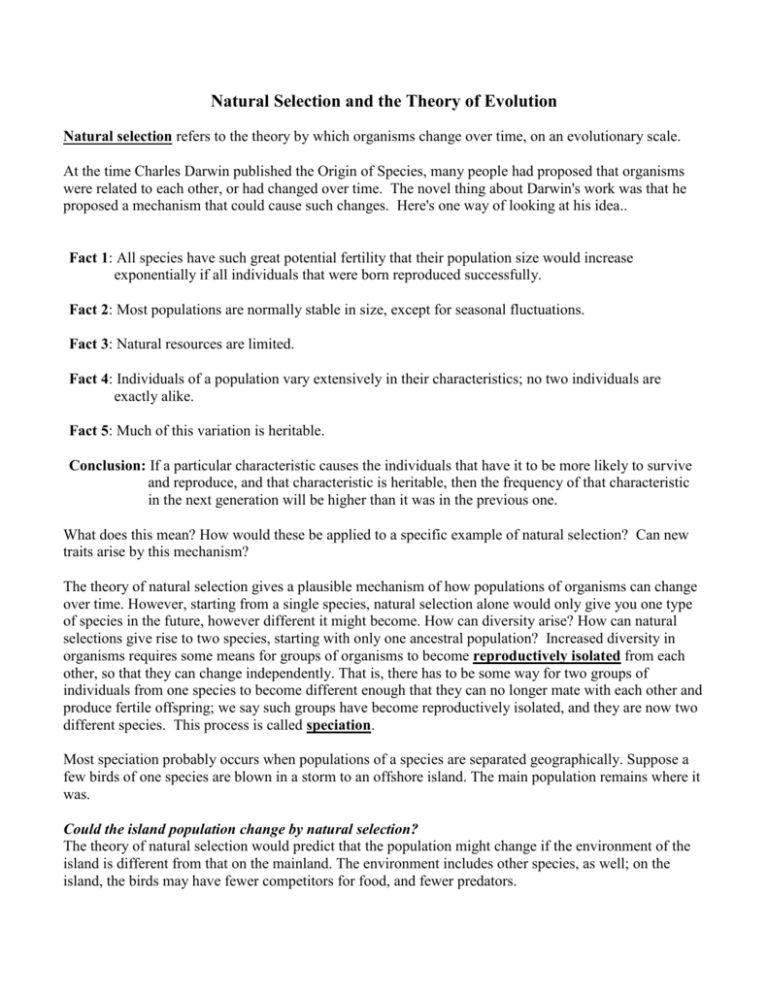
Natural Selection and the Theory of Evolution Natural selection refers to the theory by which organisms change over time, on an evolutionary scale. At the time Charles Darwin published the Origin of Species, many people had proposed that organisms were related to each other, or had changed over time. The novel thing about Darwin's work was that he proposed a mechanism that could cause such changes. Here's one way of looking at his idea.. Fact 1: All species have such great potential fertility that their population size would increase exponentially if all individuals that were born reproduced successfully. Fact 2: Most populations are normally stable in size, except for seasonal fluctuations. Fact 3: Natural resources are limited. Fact 4: Individuals of a population vary extensively in their characteristics; no two individuals are exactly alike. Fact 5: Much of this variation is heritable. Conclusion: If a particular characteristic causes the individuals that have it to be more likely to survive and reproduce, and that characteristic is heritable, then the frequency of that characteristic in the next generation will be higher than it was in the previous one. What does this mean? How would these be applied to a specific example of natural selection? Can new traits arise by this mechanism? The theory of natural selection gives a plausible mechanism of how populations of organisms can change over time. However, starting from a single species, natural selection alone would only give you one type of species in the future, however different it might become. How can diversity arise? How can natural selections give rise to two species, starting with only one ancestral population? Increased diversity in organisms requires some means for groups of organisms to become reproductively isolated from each other, so that they can change independently. That is, there has to be some way for two groups of individuals from one species to become different enough that they can no longer mate with each other and produce fertile offspring; we say such groups have become reproductively isolated, and they are now two different species. This process is called speciation. Most speciation probably occurs when populations of a species are separated geographically. Suppose a few birds of one species are blown in a storm to an offshore island. The main population remains where it was. Could the island population change by natural selection? The theory of natural selection would predict that the population might change if the environment of the island is different from that on the mainland. The environment includes other species, as well; on the island, the birds may have fewer competitors for food, and fewer predators. Could the island population become reproductively isolated from the mainland population? Certain types of speciation may occur due to adaptive changes. If the island population is using different food sources, found at different times of the year, its time of mating might change. This could cause temporal isolation, and the two groups would no longer mate with each other. If the form, metabolism, or physiology of the island individuals is different, hybrids between them and the mainland birds might be infertile. Suppose no directional selection occurred to change the island species. Could it change anyway? Change occurs in populations over time, even in the absence of selection, simply by chance. This is an aspect of change in organisms that Darwin didn't give much thought to, but later biologists have explored in some detail. Mutations occur all the time, though the rate of mutation is low enough that mutation alone doesn't change frequencies of alleles in a population very much. But consider a population of black birds and brown birds. A single gene controls color. One allele causes black, the other causes brown. If there are 2 black birds and 2 brown birds in the population, could all the offspring be black? They could. For one thing, suppose the brown birds don't happen to mate, or both get eaten by hawks, or mate, but happen to have all their eggs stolen by weasels. Chance factors such as these can change the allele frequencies in a population. Such changes are called genetic drift. Natural selection and genetic drift can both cause changes in populations. Population geneticists have noted many examples of rapid change in small, isolated groups of members of a species. In some cases, partial or complete reproductive isolation has occurred in a short period of time. Complete reproductive isolation occurred at least once in a laboratory population of fruit flies, resulting in a new artificial species (even though the flies looked just like the parent species). Islands are known to support many unique species, often similar to those in nearby mainland areas, but reproductively isolated. Speciation is apparently a common, and often rapid, phenomenon. Speciation What does it mean to say something is a species? Humans are a species. Domestic dogs are a species. California Poppies are a species. At the organismal level, what makes something part of a species? A species is a group of organisms which can interbreed freely, producing fertile offspring; and which cannot (or do not) interbreed with organisms belonging to other species. The species is the most important level of classification, because it is the only one which has biological reality. Why is it that members of a species look similar to each other, and different from members of other species? Members of a species look similar because they get their genes from the same group of parents. They cannot get genes from members of other species, because they can't (or don't) mate with them; species are reproductively isolated.


